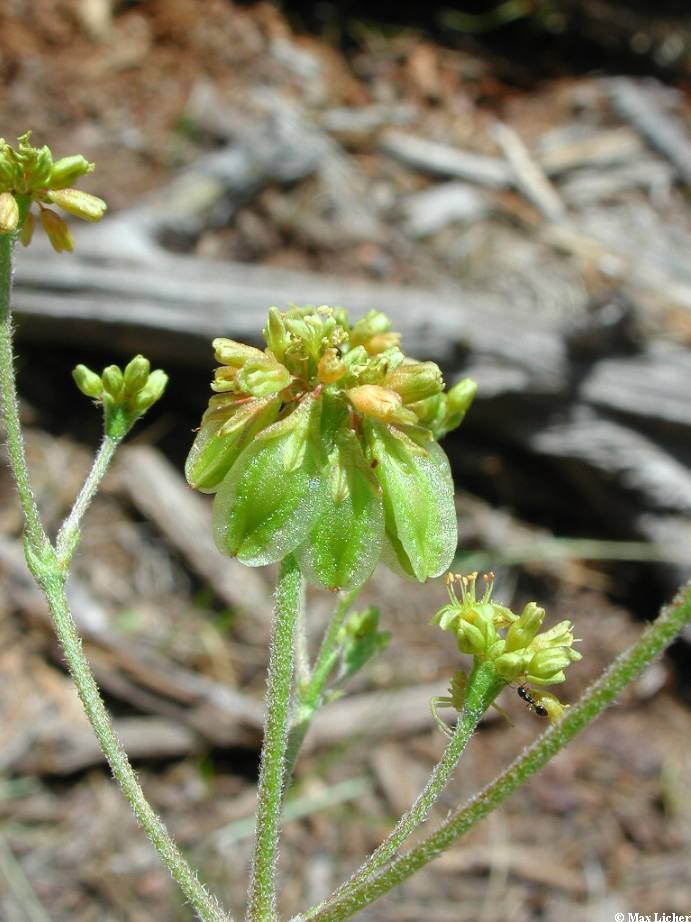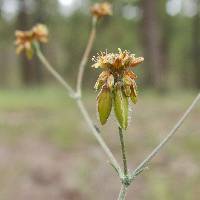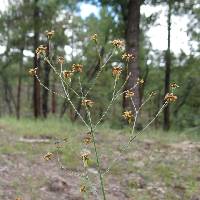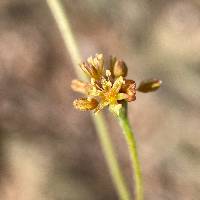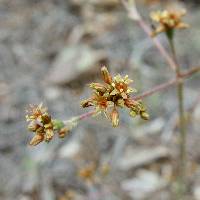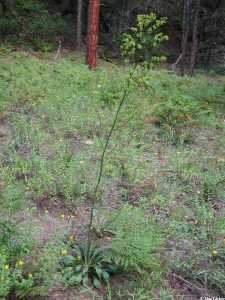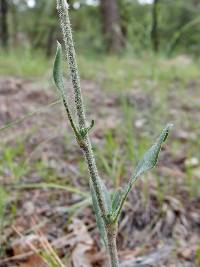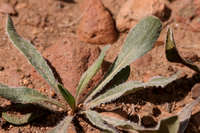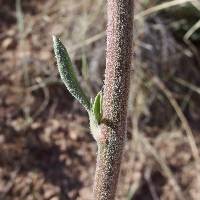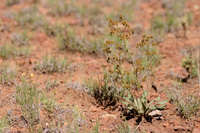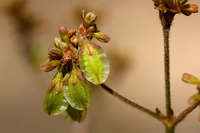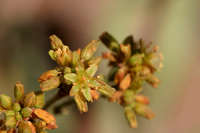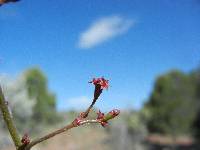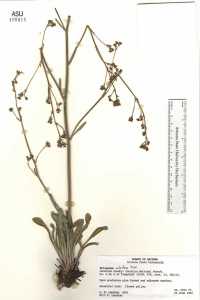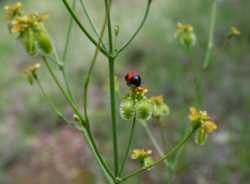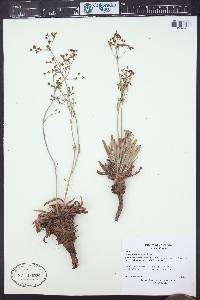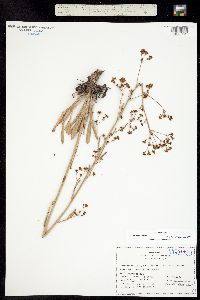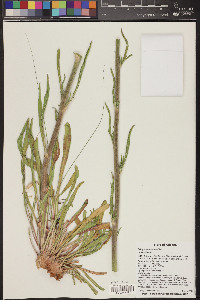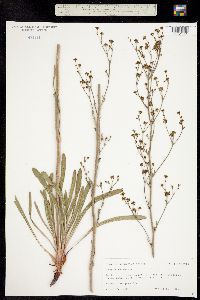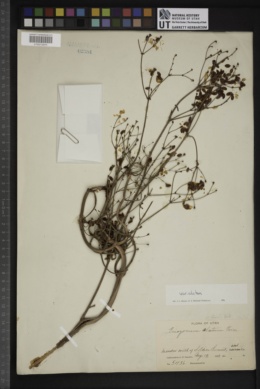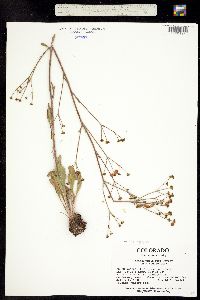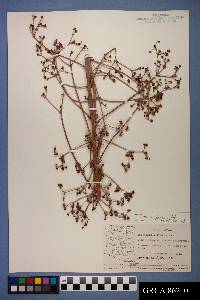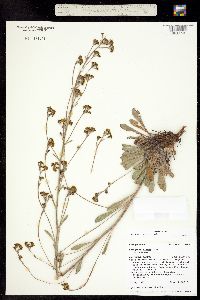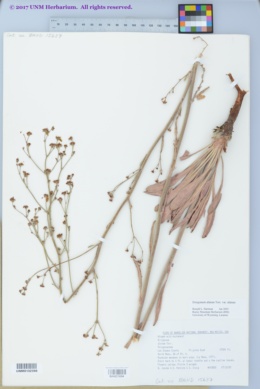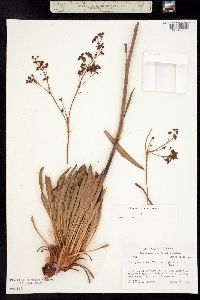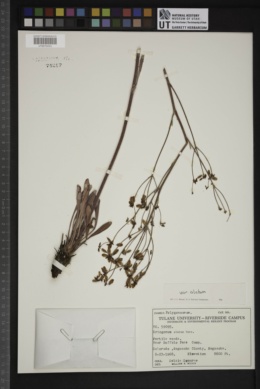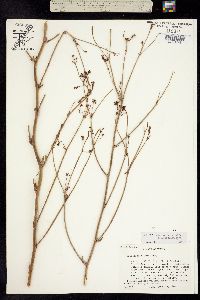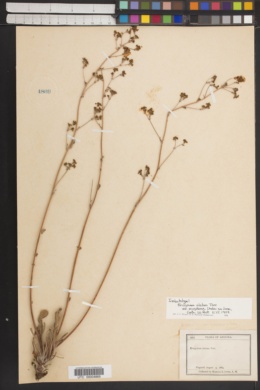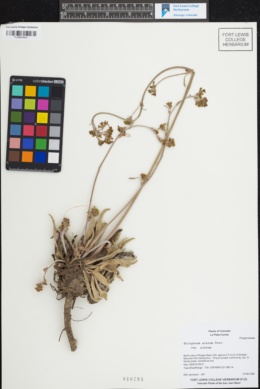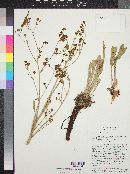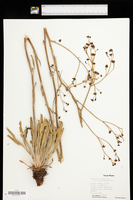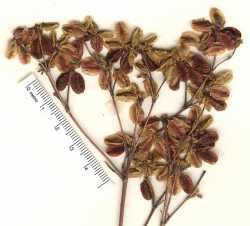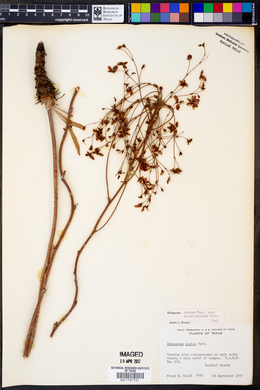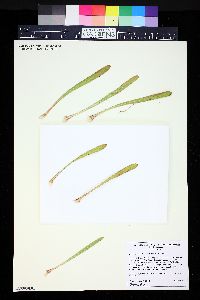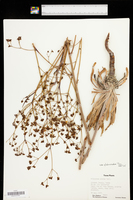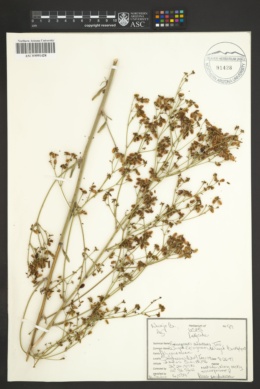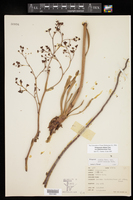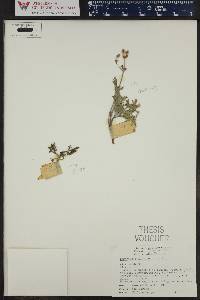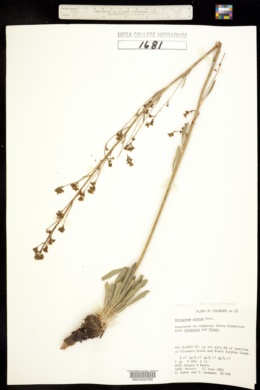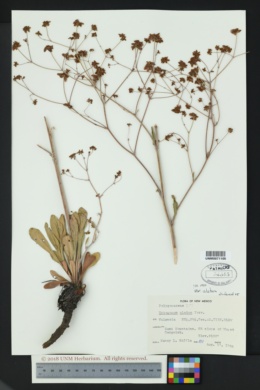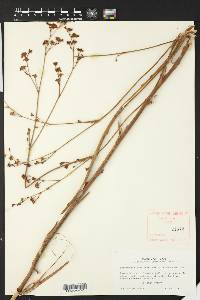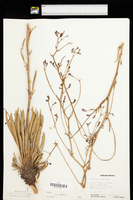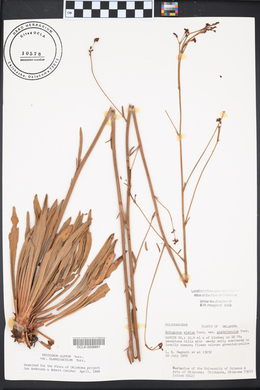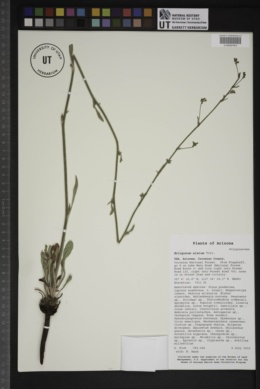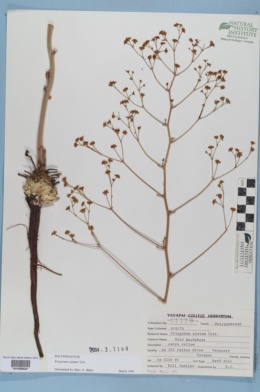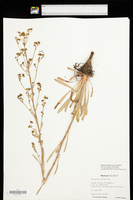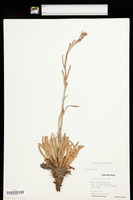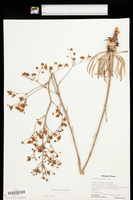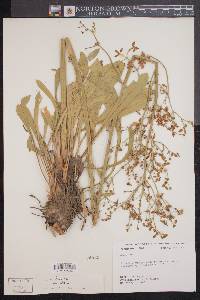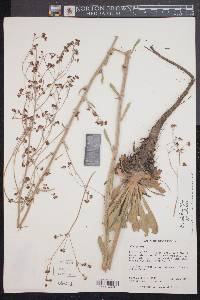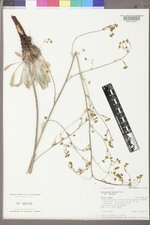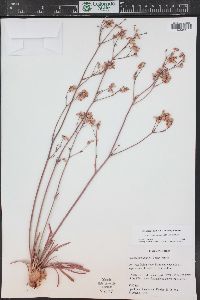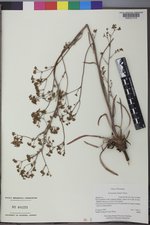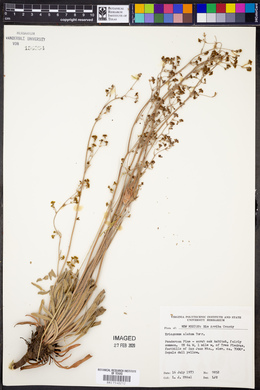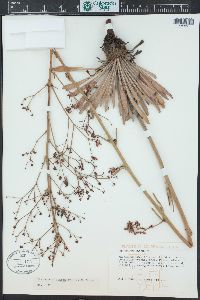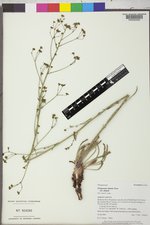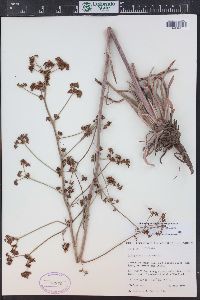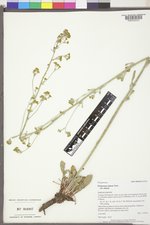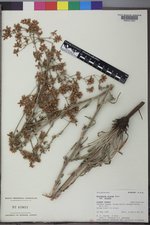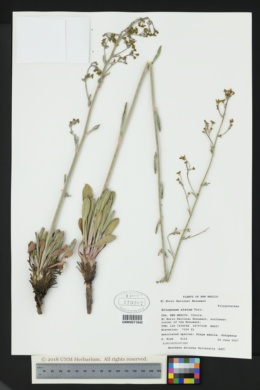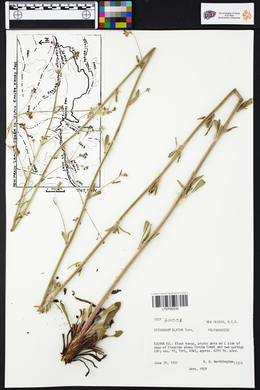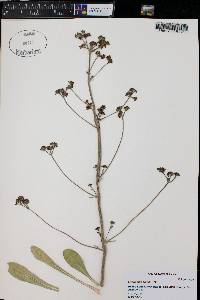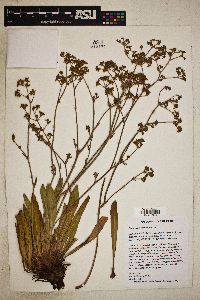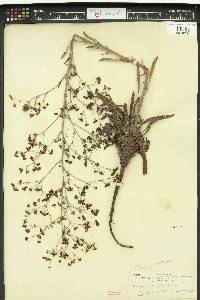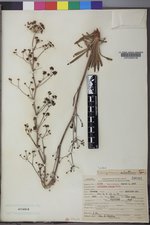Eriogonum alatum
|
|
|
|
Family: Polygonaceae
winged buckwheat, more...Winged Wild Buckwheat, wind wildbuckwheat, wing eriogonum
[Eriogonum alatum subsp. mogollense] |
Herbs, monocarpic, 5-20(-25) dm, strigose or glabrous; taproot often chambered. Stems: caudex absent; aerial flowering stems usually 1, not fistulose, 2-13 dm, strigose or glabrous. Leaves basal and sometimes cauline; basal petiolate, petiole 2-6 cm, stigose to woolly or glabrous, blade linear-lanceolate or lanceolate to oblanceolate to spatulate, (3-)5-20 × 0.3-2 cm, strigose, becoming glabrous and green on both surfaces except for margins and midvein; cauline sessile, blade linear-oblanceolate to lanceolate, 1-9 × 0.3-0.8(-1) cm, similar to basal blade. Inflorescences 2-10 dm; branches strigose or glabrous; bracts semileaflike proximally, linear to linear-lanceolate, 2-9 × 1-3 mm, scalelike distally, triangular, 0.8-5 × 0.5-2 mm. Peduncles erect, straight or curving upward, 0.5-3.5 cm, strigose or glabrous. Involucres turbinate to campanulate, 2-4(-4.5) × 2-4(-4.5) mm, strigose or glabrous; teeth 1-1.8 mm. Flowers 1.5-2.5 mm in anthesis, 3-6 mm in fruit; perianth yellow to yellowish green, rarely maroon in anthesis, often reddish or maroon in fruit, glabrous; tepals lanceolate; stamens 1.5-3 mm; filaments glabrous. Achenes yellowish green to reddish brown, 5-9 mm, glabrous, 3-winged entire length, beakless. The mature reddish roots of Eriogonum alatum can be distinctively chambered. The Navajo (Diné) people consider the species to be a 'life medicine' (L. C. Wyman and S. K. Harris 1951), using a mixture of shredded roots and water primarily to treat internal ailments. The species is used also as a ceremonial medicine (P. A. Vestal 1952). The Zuni use it as an emetic for stomachaches (S. Camazine and R. A. Bye 1980).
FNA 2005, Kearney and Peebles 1969, McDougal 1973 Duration: Perennial Nativity: Native Lifeform: Subshrub General: Herbaceous perennials to 100 cm tall, stems often solitary, tall and wand-like, simple to paniculate branching above, not woody above the ground, herbage green, strigose or pubescent to glabrate, hairs long and fine, not appressed, plants arising from a woody caudex and long taproot. Leaves: Alternate, mostly basal or arising from a basal rosette, 3-20 cm long, 0.5-2 cm wide, oblanceolate to linear, margins entire or nearly so, tapering at the base into long petioles, obtuse to acute at the tips, cauline sessile, linear-oblanceolate to lanceolate, reducing apically, blades strigose becoming glabrous and green on both surfaces except for margins and midvein. Flowers: Apetalous, the calyx yellowish to yellowish green and sometimes reddish in age, glabrous, with dry and membranaceous (sericeous) petaloid lobes, these 6-parted, rounded at the tips, to 2 mm long, involucres turbinate to campanulate, 2-4 mm long with short teeth, stamens 9, filaments inserted at the base of the calyx, inflorescences with proximal linear to linear-lanceolate leaf-like bracts 2-9 mm long and 1-3 mm wide, becoming greatly reduced, scalelike and triangular distally, flowers borne in a long open cyme with strigose or glabrous branches. Fruits: Trigonous achenes, yellowish-green to reddish-brown, 6-7 mm long, usually more than half as wide, 3-winged nearly to the base, the wings thin and membranaceous. Ecology: Found from 3,500-10,000 ft (1067-3048 m); flowering June-September. Distribution: Nebraska to Utah, south to Texas and Arizona. Notes: There are many species of Eriogonum in Arizona, it is good to collect when trying to identify these plants to species. If the perianth is purplish to yellowish, and the achenes are 7-8 mm long and only about half as wide, the species is likely E. alatum var. alatum (E. triste in older texts.) Ethnobotany: The plant was used for pain, as a lotion for rashes, and as a life medicine, a cold infusion of the root was used for diarrhea, sore gums, ceremonial medicine, and cough, the powdered root was mixed with tallow and used as an ointment for an infant's sore navel, and the root was eaten as an emetic for stomachaches. The roots were also used for food, and the ground seeds were made into a mush with milk. The plant was used in the Life or Knife Chant. Synonyms: Pterogonum alatum Editor: LCrumbacher 2011 Etymology: Eriogonum comes from the Greek erion, "wool," and gonu, "joint or knee," in reference to the hairy or woolly joints of some of the species of the genus, while alatum likely means with appendaged wings or flanges, usually the stems or leaf petioles. |
|
|
|

